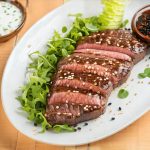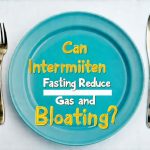Fasting, whether for religious reasons, health optimization, or simply as a reset button for your digestive system, is gaining popularity. However, breaking a long fast – one lasting beyond 24 hours – isn’t as simple as immediately diving back into your regular diet. In fact, doing so can lead to uncomfortable symptoms like nausea, bloating, diarrhea, and even weakness. These unpleasant effects are often the result of “refeeding syndrome” in its milder forms or simply overwhelming a system that has been resting for an extended period. The key lies in careful reintroduction of food, prioritizing gentle nourishment over immediate gratification. Understanding why these symptoms occur is crucial to navigating the process successfully and reaping the benefits of your fast without setbacks.
The digestive system, like any other part of the body, adapts during prolonged fasting. Enzyme production decreases, gut motility slows down, and insulin sensitivity changes. Suddenly bombarding this system with a large meal or complex foods can create significant stress. It’s not just about what you eat; it’s also about how much and in what order. The goal is to gradually reawaken your digestive processes, allowing them to adjust without being overloaded. This requires mindful choices focused on easily digestible nutrients and small portion sizes – a slow and steady approach that prioritizes comfort and minimizes the risk of adverse reactions. If you’ve recently switched diets and are experiencing digestive issues, consider exploring grain-free diet related constipation as well.
Reintroducing Food: Gentle Starts & Strategic Choices
The initial hours after breaking a long fast are critical. Your body needs readily available energy, but it’s also extremely sensitive. Think of it like waking up a sleeping giant – you wouldn’t startle it with loud noises or sudden movements. Instead, you’d gently ease it awake. This translates to prioritizing liquids and easily digestible foods in very small portions. Avoid anything that requires significant digestive effort, such as fats, complex carbohydrates (like bread or pasta), and fibrous vegetables. A good starting point is something simple like bone broth – it’s hydrating, contains electrolytes, and is easy on the stomach. Other excellent choices include diluted fruit juice (apple or grape are often well-tolerated) or coconut water.
The focus should remain on hydration for the first few meals. Fasting naturally depletes electrolyte stores, so replenishing them is vital. Adding a pinch of sea salt to your rehydration fluids can help with this. Don’t underestimate the power of slow consumption; sip liquids and eat small bites slowly, allowing your body time to process what it’s receiving. Avoid rushing – even if you feel hungry, patience is key. Remember that the initial hunger pangs are often psychological rather than a true need for substantial food. Your body needs time to recalibrate its hunger signals. If you experience a food sensitivity flare-up, it’s important to address it promptly and adjust your diet accordingly.
Consider starting with foods that are easily absorbed and don’t require much digestion. This includes things like: – Puréed fruits (applesauce, banana) – Well-cooked vegetables purées (carrot, sweet potato) – Small amounts of fermented foods (yogurt or kefir – if tolerated, start very small) – Eggs (scrambled are easier to digest than fried) These options provide essential nutrients without overwhelming the digestive system. It’s also wise to avoid caffeine and alcohol immediately after breaking your fast as they can further irritate a sensitive stomach. Understanding low-fodmap diet principles can help you make informed food choices, especially if you’re prone to digestive discomfort.
Navigating Potential Nausea: Immediate Steps & Remedies
Nausea is perhaps the most common complaint when refeeding after a long fast, but it’s often manageable with prompt action. The first step is to stop eating if you feel nausea creeping in. Don’t try to “push through” – this will likely worsen the situation. Instead, rest and focus on gentle hydration with sips of water or herbal tea (ginger tea is particularly helpful). Ginger contains compounds that can soothe the stomach and reduce nausea.
If the nausea persists, consider a bland diet for your next meal. This means sticking to extremely simple foods like plain rice, toast, or crackers. Avoid any seasoning or flavorings. The goal is to give your digestive system a complete break. If you suspect electrolyte imbalance may be contributing to the nausea, supplementing with an oral rehydration solution (ORS) can be beneficial. Be careful not to overdo it on electrolytes, however; follow package directions carefully. You could also learn what to do after a reflux flare-up as nausea is often associated with it.
Beyond dietary adjustments, other strategies can help alleviate nausea: – Deep breathing exercises – slow, controlled breaths can calm the nervous system. – Rest in a quiet, dark room – minimizing stimulation can reduce feelings of overwhelm. – Applying a cool compress to your forehead or neck – this can provide soothing relief. Always listen to your body and adjust your refeeding strategy accordingly. If nausea is severe or accompanied by other concerning symptoms (like dizziness, weakness, or vomiting), seek medical attention.
Portion Control & Frequency: Gradual Increase Over Time
The concept of portion control becomes even more crucial after a long fast. Start with incredibly small portions – think tablespoon-sized amounts – and gradually increase the quantity as your body tolerates it. Don’t be tempted to eat a “normal” sized meal, even if you feel hungry. The digestive system needs time to rebuild its capacity. The same applies to frequency; begin with frequent, very small meals or snacks throughout the day rather than three large meals. This helps maintain stable blood sugar levels and prevents overwhelming the digestive system. It’s important to have a reflux rescue kit on hand in case of discomfort during this process.
As days progress, slowly increase portion sizes and reduce meal frequency. For example: – Day 1: Small sips of fluids + tablespoon-sized portions every 2-3 hours. – Day 2: Slightly larger portions (¼ cup) every 4-6 hours, introducing simple foods like puréed fruits or vegetables. – Day 3: Continue increasing portion sizes and complexity of foods, gradually working towards more “normal” meals over the following days. This is not a race; it’s a gentle reintroduction process. Pay attention to how your body responds at each stage and adjust accordingly.
The Role of Electrolytes & Gut Health
Electrolyte imbalance is often a significant contributor to post-fast nausea and other symptoms. Fasting can deplete levels of sodium, potassium, magnesium, and calcium – essential minerals for proper bodily function. Replenishing these electrolytes is vital for restoring fluid balance, nerve transmission, and muscle function. Incorporating electrolyte-rich foods into your refeeding plan (like bananas for potassium or leafy greens for magnesium) is helpful, but sometimes supplementation may be necessary. Oral rehydration solutions are a convenient way to replenish electrolytes, but again, follow package directions carefully. If you’ve switched to a raw food plan and are experiencing digestive issues, it’s important to address them promptly.
Gut health also plays a crucial role in successful refeeding. During prolonged fasting, the gut microbiome can undergo shifts. Reintroducing fermented foods (like yogurt or kefir) can help restore beneficial bacteria and improve digestion. Probiotic supplements may also be considered, but it’s important to choose a high-quality product with diverse strains of bacteria. A healthy gut is essential for optimal nutrient absorption and overall well-being. Avoid introducing overly processed foods or those containing artificial sweeteners, as these can disrupt the gut microbiome further.
Ultimately, breaking a long fast requires patience, mindfulness, and a gentle approach. Prioritizing hydration, starting with easily digestible foods in small portions, and replenishing electrolytes are key to minimizing nausea and maximizing the benefits of your fasting experience. Remember that everyone responds differently, so listen to your body and adjust your refeeding strategy accordingly. You might also want to consider what to eat before bed after you resume eating normally to prevent discomfort.


















